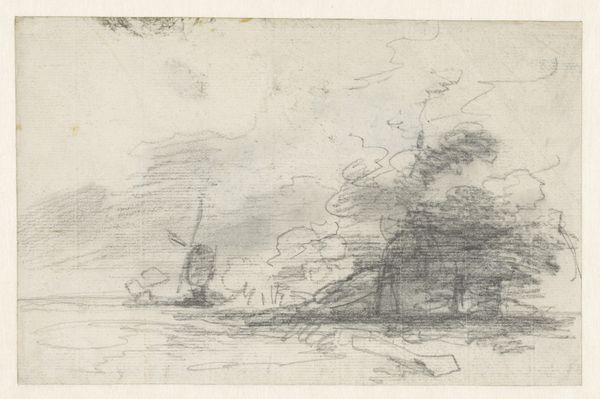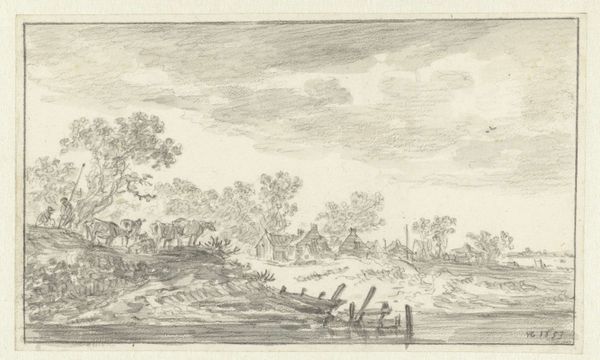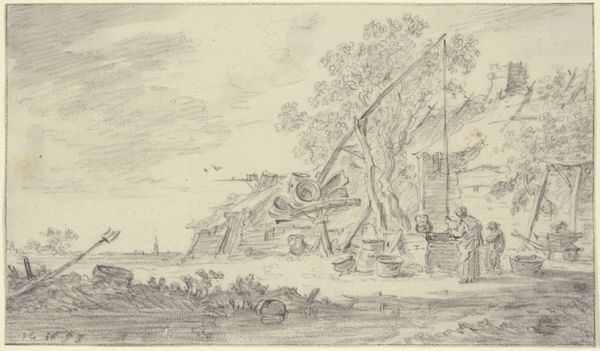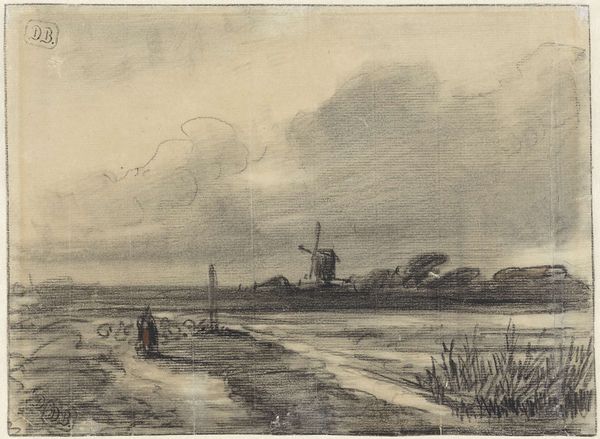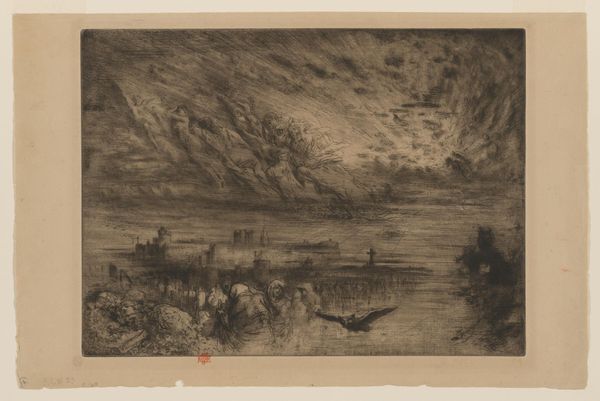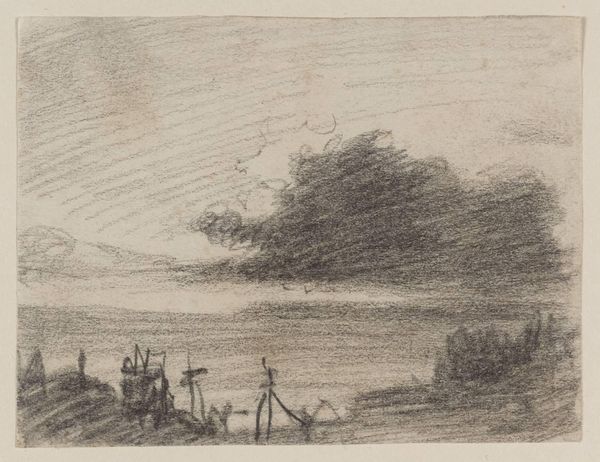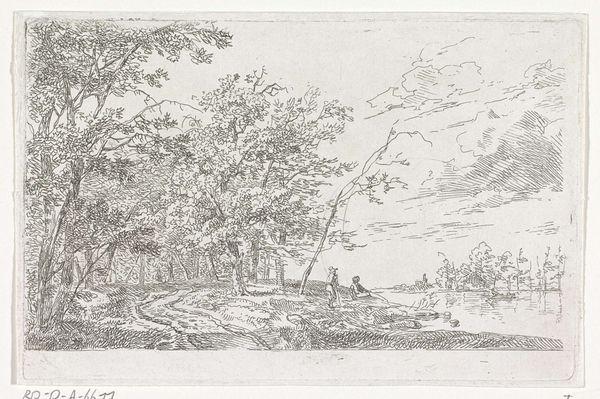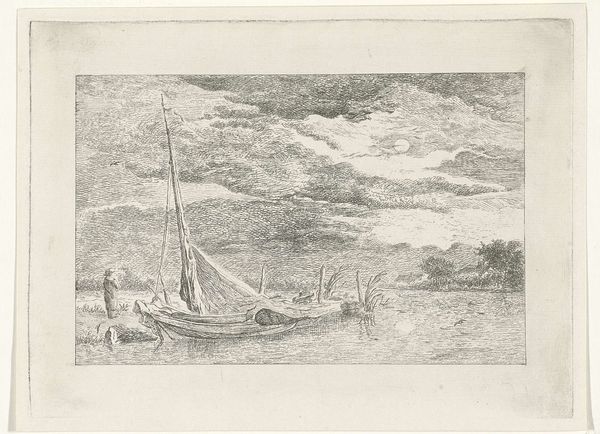
drawing, pencil
#
drawing
#
impressionism
#
pencil sketch
#
landscape
#
pencil
#
realism
Dimensions: height 254 mm, width 322 mm
Copyright: Rijks Museum: Open Domain
Curator: Well, I find this sketch to be incredibly evocative; there’s a quiet beauty to it. Editor: A beauty born of scarcity, perhaps? This "Een wetering bij Abcoude," a pencil drawing dating roughly from 1888, strikes me as stark, almost austere. The limited palette directs our attention squarely to the labor involved. We see the mark-making so clearly, the repeated strokes that build up the clouds and define the waterline. Curator: Yes, it is a work on paper; the pencil allows for capturing such subtle details of light and texture. Look how Gabriël uses hatching to create shadows and the negative space to bring out the luminous clouds. You can almost feel the damp air and the subtle breeze through the trees. I think the muted tones beautifully represent a cloudy Dutch sky, no? Editor: Undoubtedly. But what interests me is that such studies would often be incorporated into larger exhibition paintings that had more financial power or visibility in the art market. I imagine this could have been shown in the Pulchri Studio alongside finished works? What's the relationship between these pencil studies and a booming market for landscape painting during this period? And I’m intrigued by its acquisition history as well. Was it commissioned, collected privately, then eventually donated to the Rijksmuseum, therefore democratizing a privately owned piece? Curator: I'm not sure if Gabriël intended it to be incorporated, though you raise important questions. Perhaps the rawness allows the viewer to appreciate his specific process. What impact do you think that process, his materials, and how he utilizes it plays with its perception as fine art, rather than craft or preparation work? Editor: Precisely. This subtle work now hangs in one of the greatest art institutions in the world. It's intriguing how the presentation and location, along with its journey, enhance our understanding of it. Without that history, and our modern access to this landscape sketch, it could just remain an underappreciated piece or preparatory drawing that would never be given its time. Curator: A great point. Its presence here provides insight into Gabriel's skill. Thanks for sharing a new perspective on this compelling piece. Editor: It’s fascinating to reflect on how the work attained cultural capital and came to reside in the Rijksmuseum, accessible for a wider audience.
Comments
No comments
Be the first to comment and join the conversation on the ultimate creative platform.
